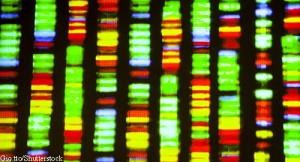 Systemic lupus erythematosus (SLE) results from a loss of immune tolerance to nuclear and cell surface antigens. Twin studies have revealed that SLE has a strong genetic component, and that there is a 10-fold increase in concordance rates between monozygotic and dizygotic twins. Researchers have pursued these genetic risks via genome-wide association studies and identified major histocompatibility complex polymorphisms, including single nucleotide polymorphisms and classical human leukocyte antigen, as risk factors for SLE. However, these genes don’t appear to account for all of the genetic risks for SLE. To date, researchers have been unable to identify other genetic risk factors due to the modest sample sizes of genome-wide association studies and their consequent small scope and decreased reliability.
Systemic lupus erythematosus (SLE) results from a loss of immune tolerance to nuclear and cell surface antigens. Twin studies have revealed that SLE has a strong genetic component, and that there is a 10-fold increase in concordance rates between monozygotic and dizygotic twins. Researchers have pursued these genetic risks via genome-wide association studies and identified major histocompatibility complex polymorphisms, including single nucleotide polymorphisms and classical human leukocyte antigen, as risk factors for SLE. However, these genes don’t appear to account for all of the genetic risks for SLE. To date, researchers have been unable to identify other genetic risk factors due to the modest sample sizes of genome-wide association studies and their consequent small scope and decreased reliability.
James Bentham, PhD, research associate at the Imperial College London in the U.K., and colleagues addressed this data gap by performing a large genome-wide association study. They genotyped 4,946 individuals with SLE (cases) and 1,286 healthy controls, and then analyzed the results. They then combined these data with previously performed genotypes, obtaining a total of 7,219 cases and 15,991 controls—all of European ancestry. Their research approach was comprehensive and included a meta-analysis of published genome-wide association studies followed by an ex vivo replication study. The investigators published the results of their analyses online Oct. 26 in Nature Genetics.1
Their studies identified 25 loci of genome-wide significance. The researchers sought to validate these findings via a meta-analysis that included their genome-wide association study results combined with those from a comparable, independent European SLE study. The combined analysis yielded 33 single nucleotide polymorphisms. To identify causal genes at the susceptibility loci, the investigators evaluated the function of these genes via examination for cis-acting expression quantitative trait loci (eQTL) effects in ex vivo immune cells. The team then integrated all of their results and performed an in silico survey of mouse phenotype data from knockouts that targeted genes from the list of associated SLE loci. The results were intriguing, but the authors caution that their gene expression analyses can reveal only association and not causation.
The researchers were able to map 43 susceptibility loci, including 10 new associations. The 10 novel SLE-associated loci are diverse. They include interleukin (IL) 12A, which encodes a subunit IL-12; IL-12B, which encodes a different subunit of IL-12; and IL-12RB2, which encodes the IL-12 receptor. The investigators also identified an X-chromosome association at rs887369, which supported CXorf21 as a candidate gene. The protein encoded by CXorf21 has yet, however, to be characterized.
The group of susceptibility loci also included five genes that had previously been shown to be associated with SLE in Chinese patients. The current study represents the first time, however, that the genes have been mapped in European SLE. The group of SLE susceptibility loci also included a large number (n=16) of transcription factors. All told, the team found aberrantly regulated gene expression networks appear to be behind the development of SLE. The networks encompass multiple cell types in both the innate and adaptive immune system.
Lara C. Pullen, PhD, is a medical writer based in the Chicago area.
References
- Bentham J, Morris DL, Cunninghame Graham DS, et al. Genetic association analyses implicate aberrant regulation of innate and adaptive immunity genes in the pathogenesis of systemic lupus erythematosus. Nat Genet. 2015 Oct 26. doi: 10.1038/ng.3434. [Epub ahead of print]
